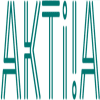After months of searching, the drug hunters had tracked down the prized game they believed could help launch the next chapter of their company.
The team from Biohaven Pharmaceutical moved fast, fearful that rivals were in close pursuit. On Christmas Eve, CEO Vlad Coric and a company board member flew 400 miles west from their home base in Connecticut, on a mission code-named “Project Rudolph.” They hoped to return bearing a valuable gift: an experimental medicine with the potential to treat a variety of brain disorders.
More than two years later, the medicine is one of Biohaven’s most important assets. Fine-tuned over years by researchers at Pittsburgh-based Knopp Biosciences, it’s designed to activate certain kinds of microscopic tunnels known as ion channels. These proteins are found on all human cells and perform essential tasks. They move muscles, govern the five senses, activate the immune system and foster communication between cells — functions that also make them prime targets for drugmakers.
“There's nothing you can think about in your body that doesn't involve ion channels,” said Gregory Kaczorowski, the former senior director of ion channel research at Merck & Co.
For patients, ion channel drugs offer a wealth of benefits. They’re used to lower blood pressure, calm seizures, beat back infections and steady heartbeats. And for developers, they can be extremely lucrative. Vertex Pharmaceuticals revolutionized how cystic fibrosis is treated with a series of ion channel therapies and, in doing so, became one of the world’s largest biotechnology companies. Its market value recently surpassed $120 billion.
Vertex has also spent decades developing ion channel blockers for pain, and this year began submitting its most advanced candidate for approval. Wall Street analysts expect the medication will be a much-needed, non-opioid option for pain management, and forecast annual sales to peak at more than $5 billion.
In spite of the potential payoffs, few pharmaceutical firms dedicate research units to ion channels. Experts say that has to do with how incredibly challenging it is to study these proteins and to drug them safely. Paul Negulescu, head of Vertex’s pain research, likens them to bucking broncos. Hard to capture, and even harder to tame.
But with the help of futuristic science, researchers can now see the architecture of ion channels and the ways these speedy proteins move in real time, allowing them to construct drugs that, at least in theory, have a better shot at being safe and effective. Those advances have renewed interest and investment, especially among brain drug developers. Companies like Biohaven, Neurocrine Biosciences and Jazz Pharmaceuticals are betting the field will produce new treatments for epilepsy, tremor, depression and bipolar disorder in the not-too-distant future.
“Ion channels really have the potential for us to change the way we treat neuropsychiatric and neurological disorders,” Coric said. “It's ripe for moving quickly.”

Very unlucky squid
It can be difficult to picture just how small a human cell is. On average, it’s one-tenth as wide as a strand of hair and 25 times smaller than a grain of salt. Tinier still are the thousands of ion channels anchored into the fluid, oily shell that encases these microscopic worlds.
The channels act as canals; though, instead of water, they control the movement of electrically charged particles like sodium, potassium, calcium and chloride. When cells are stimulated in certain ways, the canals open, permitting ions to flood in or out. They then shut and return to a “resting” state. The opening and closing happens hundreds of times a second and actually jolts the cell, in essence telling it, “Something is happening, react!”
Researchers know this thanks to two English physiologists — and some very unlucky squid. Between 1939 and 1952, Alan Hodgkin and Andrew Huxley published groundbreaking papers about giant, squid-harvested nerves that can grow as thick as a penny and longer than a yardstick. They found the nerves signaled via the rush of electric currents across membranes. And even though Hodgkin and Huxley couldn’t see them, they correctly predicted the presence of ion channels.
Their work won a Nobel Prize in 1963, and has since served as the foundation for other breakthroughs that would earn the prestigious award.
In the 1980s, two cell specialists, Erwin Neher and Bert Sakmann, created a technique to measure the current passing through a single ion channel. This “patch clamping” is a bit like the cupping therapy popularized by Olympic athletes. It uses an ultra-thin glass tube to suction up a tiny piece of the cell membrane so researchers can study the ways drugs affect an individual channel.
The technique was “revolutionary” and "gave biochemists and biologists the ability to work on ion channels,” according to Kaczorowski.
More tools arrived by the early 2000s. American neurobiologist Roderick MacKinnon provided the first look at the atomic structure of an ion channel, while biochemist Roger Tsien invented a pallet of colorful dyes that made it possible to record the activity of the proteins.
This period also marked the rise of businesses built around automating the patch clamping process, which increased the volume of drug screenings that could be done in a day from a handful to thousands.
Together, these developments brought control and precision to an area of research where victories were often the product of guesswork. Older anti-seizure and blood pressure medications were discovered because their effects were easy to observe, not because scientists knew exactly how they regulated ion channels. And, without the clear picture of protein activity researchers now have at their disposal, large players like Merck and Bristol Myers Squibb turned their focus elsewhere.
“A lot of what was done, was done — I don't want to say irrationally, but phenotypically. When you have to do it rationally, it's difficult,” Kaczorowski said. “It's easy to cut and paste DNA and RNA and stuff like that. It's a little more conceptually difficult to understand electricity. And to be honest, pharma executives don't really understand this.”

Double-edged swords
If their dollars are any indication, drugmakers seem to slowly be coming back around to ion channels.
In late November, Merck wagered up to $610 million on a young biotech that’s investigating whether Parkinson’s disease can be treated by regulating calcium channels. A week earlier, Jazz agreed to collaborate with the GSK spinout Autifony in a deal worth as much as $771 million.
Venture investors are buying in as well. Westlake Village Partners led a $135 million fundraising round for Latigo Biotherapeutics, a California-based startup that launched in February, hoping to follow in Vertex’s footsteps with a pipeline of sodium channel-blocking, non-opioid painkillers.
“It's been a long, long journey, but we are capitalizing on it,” said Stephen Waxman, a neurology professor at the Yale School of Medicine who’s credited with major discoveries about the role ion channels play in pain. “It's a very exciting time,” he added. “There are scientific issues, all the regulatory issues. But translation is achievable, and it's happening.”
The new investments are a step up from just a few years ago. In 2019, a subsidiary of Jazz spent $53 million to acquire a small company focused on a group of calcium channels that regulate muscle activity. The deal expanded Jazz’s research into movement disorders while handing it a medicine in mid-stage testing for a common type of tremor.
“We were quite convinced we had a target that was worth going after, and a drug that was highly differentiated in the class,” said Robert Iannone, the company’s head of research and development.
Around the same time, Neurocrine licensed experimental therapies from Idorsia and Xenon Pharmaceuticals. Both drugs are meant to treat rare epilepsies affecting children, with the former blocking the same channels as Jazz’s medicine and the latter inhibiting “Nav1.6,” one of the nine known sodium channels.
Biohaven, too, was struck by the work going on at Xenon, which in 2017 bought rights to a drug intended to keep some potassium channels open for longer. The thinking was this effect could stabilize neurons and, in turn, treat illnesses tied to the cells overfiring. Four years later, Xenon had in hand positive results from a study of adults with focal epilepsy, and was evaluating the drug against major depression as well.
Coric said that and other data convinced him the time was right to “pounce” on ion channels. Biohaven, he thought, may even repeat the success it had with a new class of migraine medications. Despite competition from much larger companies, Biohaven’s Nurtec ODT carved out market share and pop culture relevance through ads on racecars and TikTok and endorsements from celebrities like Khloe Kardashian. Pfizer bought that drug and the rest of the biotech’s migraine business in 2022 for $11.6 billion.
As Coric and his team began searching for an ion channel therapy of their own, they came across a perennial problem for this area of development. Since the proteins are everywhere in the body, drugs aimed at them must be selective, or else the consequences may be dire.
A promiscuous channel blocker might sneak into the chest, causing the heart to literally skip a beat. In the brain, it could trigger neurological issues like dizziness, drowsiness and fatigue. In one stark example, the numbing agent lidocaine and the deadly poison of the Japanese puffer fish both block a category of sodium channels. What differentiates them is selectivity.
“Ion channels are a double-edged sword,” Kaczorowski said. “They’re the targets of therapeutics, but they’re also the targets of toxicity. You don't get something for nothing with ion channels.”
Over the past decade, new technologies have given scientists the power to construct more precise drugs. One such technology, known as “cryo-electron microscopy,” takes a sample of proteins and, through a flash-freezing technique, locks them into a thin sheet of ice colder than the surface of Jupiter. A beam of particles is then shot through the sheet, creating many images of the trapped proteins.
The images collectively serve as a blueprint, illustrating the layout of proteins and the best spots for potential medicines to latch onto. That’s especially useful with ion channels, since they contort into distinct shapes as they open and close. And some of those contours are more useful to drugmakers. Jazz’s medicine, for instance, is selective not only for one kind of calcium channel, but also for a particular form the channel takes.
“By bringing in this additional layer of selectivity ... you can actually target the neurons that are pathologically firing while sparing the ones that are undertaking their normal function,” said Margaret Lee, the company’s head of central nervous system pharmacology.
Even with better imaging, selectivity remains a major obstacle. At Knopp, a research team led by Steven Dworetzky and Michael Bozik analyzed thousands of molecules before pinpointing one they felt was precise enough — the one that would ultimately catch Biohaven’s eye.
“Almost every drug program is like Whac-A-Mole. You fix one thing and you break something else,” said Dworetzky, who now serves as Biohaven’s senior vice president of ion channel R&D.


Far-off symphonies
That dynamic has played out time and again in ion channel research. Setbacks still frequently happen. Xenon’s drug stumbled in a depression study in late 2023, while Jazz’s medicine just last week missed the key goals of an essential tremor clinical trial.
That may be why more money hasn’t flowed in just yet. “Investors are sort of missing this,” said Phil Nadeau, an analyst at the investment bank TD Cowen. “This is an area where there have been developments over the last decade, and it seems like there still could be. But investors aren’t putting these developments into a single category.”
Against this shadow, Vertex may be a guiding light to some.
Negulescu warns that ion channels require patience. In cystic fibrosis, the genetic cause of the disease is well understood. Yet Vertex worked for more than a decade before its first therapy, Kalydeco, came to market. In pain, it’s taken a quarter of a century.
With the pain program, the company not only developed drugs, but its own system to measure their activity. The system included stimulation tools that function like tiny defibrillation paddles, as well as fast cameras to capture the movement of the sodium channels. Other companies might need to do the same, since recording the hectic hum of ion channels is, as Waxman describes, like trying to eavesdrop on a symphony happening several towns over.
"And to make sense of it," he said, "we need to not only eavesdrop on it, but we need to isolate what is the sound of the oboe? And what is the French horn doing? And how do they interact? This is challenging work."
Ion channels also differ from other proteins, so companies seeking to enter the space might have to reframe how they approach drug development. These proteins sit in membranes and are exposed to a relatively huge electrical field. Studying them in their natural environment is therefore tricky. Aspects like the type of cell they’re in matter, because the sites where drugs attach can vary from species to species.
According to Negulescu, Vertex decided early on to do its laboratory work in human cells, which ended up being a good choice, since Kalydeco was “uniquely active” on the human form of the channel tied to cystic fibrosis. "If we had done our screening in rodents or used rodent models, we would have missed it altogether,” he said.
Negulescu expects that, in pain, the “power and the potential” of ion channel drugs will become more evident in the next five to 10 years. He’s not alone. Dworetzky has been in the industry for nearly three and a half decades, and says during that time he’s “seen the rise, the fall and the resurrection” of ion channels, with the last several years feeling like a turning point.
Waxman sees Vertex’s drug as analogous to the first statins — a good base hit, but not a home run — and predicts many more medicines will follow. And pain could just be the start. He envisions ion channels becoming a route to treatments for psychiatric disorders, cardiovascular illnesses like chronic heart failure, nerve-destroying diseases like Alzheimer’s, and even perhaps immune system conditions like arthritis.
“The future is bright,” he said.








